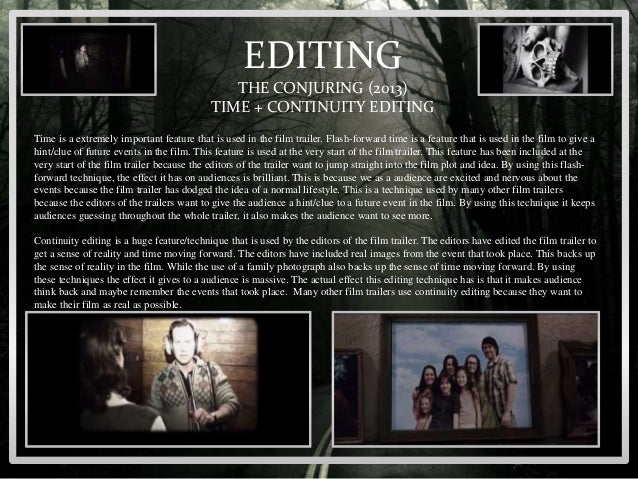The Horrors Of Editing
Orson Welles said, “The notion of directing a film is the invention of critics…the whole eloquence of cinema is achieved in the editing room” (Calder “Michael Ondaatje”). As the quote proclaims, editing is a vital aspect of movies that can drastically change the way the audience interprets the story. One film with truly remarkable editing is Apocalypse Now, directed by Francis Ford Coppola and edited by Walter Murch. While the plot of Apocalypse Now progressively becomes strange and bizarre, the editing techniques establish unity and continuity in specific individual scenes and throughout the movie as a whole.

- Here is a rundown of common terms for editing services as well as some other terms editors may use to describe them. These are arranged from heaviest editing to lightest editing. Developmental editing (may also be called structural or content) – looks at the book’s big picture and overall structure in nonfiction or plot and characters in.
- There are a great number of things that can go wrong while making a horror film, but nothing is quite as bad as making one that isn't scary. In a previous post, we talked about some basic and general concepts, like achieving atmosphere and suspense, to keep in mind while you put your scary movie together, but Movies.com has shared an episode from PBS Digital Studio’s It’s Okay to Be Smart.
One of the most widely-used techniques in the movie is the dissolve, which helped establish unity between various aspects of certain scenes. While traveling up the river, Captain Willard continually reads through his classified file on Colonel Kurtz, his target. With the help of dissolves, the specific documents and photographs are smoothly transitioned with Willard’s eyes so that the audience can observe his reactions to his voice-over thoughts. While many uses of dissolves in movies help indicate the “passing of time,” as explained in the textbook, dissolves in these scenes appear to slow time down so that the audience can fully comprehend what Willard is reading and understand how he reacts to the content (Barsam 371). In a similar scene, flashbacks are also added. The flashback occurs when Willard is reading through the file and the scene dissolves into the earlier scene where he meets with the General to discuss the mission. When combined together into one scene, the dissolve transitions help unify the individual aspects of voice-over, close-ups on the documents and photos, extreme close-ups on his eyes, and flashbacks.
But horror stories can be tricky to write well, since the reader must believe the story enough to be scared, disturbed, or disgusted. Before you submit your horror novel to literary agents or publishers, you’ll want to find an editor to help you perfect it. Horror Book Editors. A good horror editor can make sure your book is truly scary. However, through editing and the use of close-up, the audience identifies with the chicken and assumes that he is reacting to the horror he sees before him. While researching this scene, I learned that there is a technique at work here called “elliptical editing.”.
Horror Edition Guess The Movie
Another excellent example of editing occurs during the cavalry helicopter attack on the village. Many well-planned and well-executed editing techniques are used in this sequence. The sequence begins with a dramatic jump cut from the noisy music-blaring helicopters to the quiet and peaceful village square. As the attack continues, there are many examples of parallel editing, including inter-cutting. Inter-cutting is used to help preserve the continuity of missiles launched from helicopters that are subsequently seen hitting their targets. Likewise, editors do an excellent job maintaining continuity in the following sequence when an airstrike is called in. The camera angle changes seven times during this scene, including a medium shot of the aircraft, an aerial shot of the formation over the tree-line, and a wide shot of the strike zone behind the main characters. In the final film cut, both the video and the audio brilliantly match across the cuts which gives the audience a more complete view of the gigantic explosion.

The editing in Apocalypse Now had a huge impact in illustrating the unique and bizarre story. While the story increasingly approaches insanity, the editing techniques used in the film eloquently maintain a sense of structure and cohesion from start to finish. In the end, Editor Walter Murch showcased his incredible talent for editing though his use of a wide variety of editing techniques including dissolves, jump cuts, inter-cutting, and continuity editing. Each one of these techniques contributed to what is now considered one of the best edited movies of all time.
Works Cited
Barsam, Richard and Dave Monahan. Looking At Movies. 4th ed. New York City: Norton, 2013. Print.
The Horrors Of Editing Software
Calder, Peter. “Michael Ondaatje: Walter Murch and the art of editing film.” The New Zealand Herald. 24 Jan 2003. Web. 15 Apr 2015.
